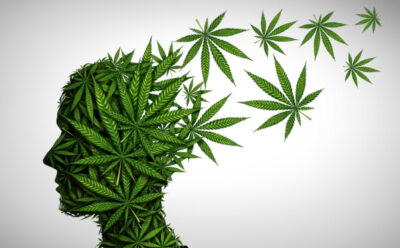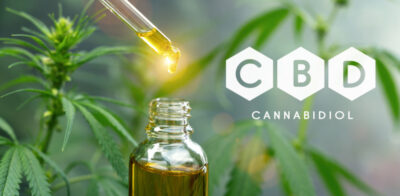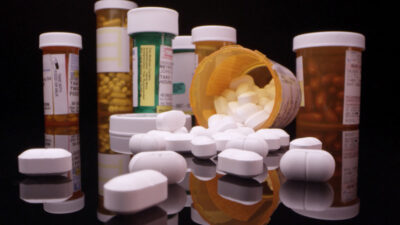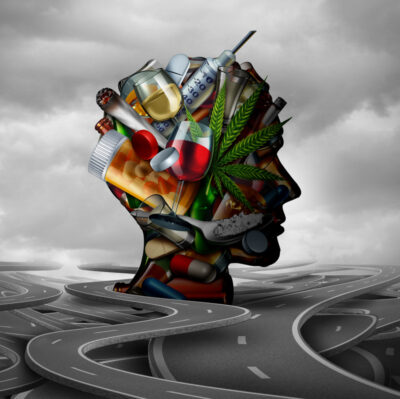Dangers of Drug-Impaired Driving
Did You Know?
Drug-impaired driving has evolved as legalized and recreational marijuana, and prescription drug use has become more prevalent in the U.S. and Canada, and has been considered a global concern by the World Health Organization.”
Drug-impaired driving has evolved to be more than just driving under the influence of illicit/illegal drugs and has become a significant concern on our roadways. With the recent legalization and/or decriminalization of recreational and medical Cannabis in several states in the U.S., the current legalization of Marijuana in Canada and the growing abuse of prescription drugs including opioids worldwide, driving under the influence of drugs is a serious public safety threat that poses new challenges for employers. The dangers of driving while alcohol-impaired are widely known and well-documented; however, drug-impaired driving is increasing on roadways all over the world. More research is needed to adequately understand the impacts on road safety.
Impairment does not only refer to being “drunk”. Several different substances can have an effect on your ability to drive including illicit/illegal, over the counter (OTC), and prescription drugs. Different drugs/medications and varying drug interactions (polysubstance use) can have different effects and how they affect each person can also vary. The following section contains information regarding each of these elements, workplace materials for employers to educate employees, and suggested actions employers can take to promote a drug-free workplace, especially when driving.
Impairment

Drugs/medications can cause varying physiological effects on the user. Drivers often identify over the counter (OTC) medications as “harmless” or “safe.” However, OTC medications including allergy medications can significantly impair the ability to drive a vehicle. Some medications can cause extreme drowsiness and/or dizziness, while others can create excitability and/or anxiousness. It is important to read and follow the instruction of the labels on all prescribed and over the counter medications and to be especially cognizant of taking these medications when driving. If the label warns against “operating heavy machinery,” this includes driving a vehicle.

The National Institute on Drug Abuse (NIDA) has identified the effects of Commonly Misused Drugs on Driving including Cannabis, opioids and alcohol.

According to the World Health Organization, Surveys and laboratory tests from various countries show that psychoactive drug use is reported frequently by drivers or detected in the biological fluids of injured or killed drivers. For instance:
- Roadside surveys show that the prevalence of any psychoactive drug among drivers ranges from 3.9 to 20.0 percent.
- Population surveys show that self-reported driving after using psychoactive drugs (mostly cannabis) varies in different countries between 3.8 and 29.9 percent.
- Prevalence of drug use (such as amphetamines, benzodiazepines, cannabis and cocaine) among fatally injured persons in a road traffic crash ranges from 8.8 to 33.5 percent.
Cannabis use in particular has been found to pose difficulties for employers. According to the U.S. Food and Drug Administration, Cannabis contains more than eighty biologically active chemical compounds. The most commonly known compounds are Delta-9-Tetrahydrocannabinol (THC) and Cannabidiol (CBD).
Cannabis can affect psychomotor skills and cognitive functions critical to driving including vigilance, drowsiness, time and distance perception, reaction time, divided attention, lane tracking, coordination, and balance. Studies have shown that impairing effects resulting from the use of Cannabis include sedation, disorientation, impaired judgment, lack of concentration, and slowed fine motor skills. These effects may contribute to delayed decision-making, impaired learning, and memory and attention deficits. However, there are different strains of Cannabis that can affect users differently (see below). These physiological affects can also have an impact on employers ability to perform in the workplace. Indica strains (“In da couch”) have a more sedating effect. Sativa strains generally cause a rush of energy and can affect people differently.

Impairment through use of Cannabis cannot be identified the same way alcohol impairment is detected. There is no standard “illegal” limit that can be used to definitively determine when one is impaired by Cannabis. Cannabis impairment will vary depending upon the concentration of the impairing THC metabolite (delta-9-tetrahydrocannabinol) and dose, the way in which marijuana is administered, the tolerance of the user, and whether marijuana is being used in addition to other drugs and alcohol. In addition, there can be significant variability in how THC is metabolized which creates challenges when drug testing to determine a positive drug test. Once administered, the impairing THC metabolite is stored in the fatty tissue of the body and can be detected several days or weeks later, beyond the period where the individual would be impaired.

The National Safety Council (NSC) position on Cannabis:
“NSC supports policies to mitigate and eliminate the risks of cannabis (marijuana) and other products containing delta-9-tetrahydrocannabinol (THC), the impairing component in cannabis. Safety concerns are paramount as legalization and decriminalization continues.
NSC believes it is unsafe to be under the influence of cannabis while working in a safety sensitive position1 due to the increased risk of injury or death to the operator and others. Research is clear that cannabis impacts psychomotor skills and cognitive ability. However, the amount of THC detectable in the body does not directly correlate to a degree of impairment. At this time, NSC believes there is no level of cannabis use that is safe or acceptable for employees who work in safety sensitive positions.”

According to the US National Library of Medicine, cannabidiol (CBD), is a chemical compound from the Cannabis sativa plant also known as marijuana or hemp. CBD is one of over 80 chemicals, known as cannabinoids, that have been identified in the Cannabis sativa plant. While delta-9-tetrahydrocannabinol (THC) is the major active ingredient in the plant, CBD is also obtained from the plant and contains small amounts of THC.
The 2018 Farm Bill legalized hemp and hemp products in the U.S. However, not all hemp-derived CBD products are legal. CBD cannot be legally included in foods or dietary supplements or included in products marketed with therapeutic claims since more research is needed on the effects of use in these instances. However, CBD can be included in “cosmetic” products if it contains less than 0.3% THC. However, there are products labeled as dietary supplements on the market that contain CBD and the amount of CBD contained in these products is not always reported accurately on the product label.
U.S. Food and Drug Administration (FDA) position on CBD:
“There is a significant interest in the development of therapies and other consumer products derived from cannabis and its components, including cannabidiol (CBD). FDA recognizes the potential opportunities that cannabis or cannabis-derived compounds may offer and acknowledges the significant interest in these possibilities. However, FDA is aware that some companies are marketing products containing cannabis and cannabis-derived compounds in ways that violate the Federal Food, Drug and Cosmetic Act (FD&C Act) and that may put the health and safety of consumers at risk.”
CBD and Driving
Since there is great uncertainty regarding the reporting of THC and its impairing effects on driving, it is recommended that CBD use is restricted when operating a vehicle or heavy machinery.
U.S. Department of Transportation (DOT) position on CBD:
“In response to inquiries about whether safety-sensitive employees (e.g., pilots, school bus drivers, truck drivers, transit vehicle operators, aircraft maintenance personnel, train engineers and ship captains) can use CBD products, DOT notes that although it requires testing for marijuana and not CBD, many CBD products have misleading labels. The Food and Drug Administration (FDA) does not currently certify the levels of THC in CBD products, so there is no federal oversight to ensure that the labels are accurate. Employees who claim to use only CBD products can test positive for marijuana and run afoul of DOT’s drug testing regulations. [Because] the use of CBD products could lead to a positive drug test result, [DOT]-regulated safety-sensitive employees should exercise caution when considering whether to use CBD products”.

Opioids are a class of drugs that include the illegal drug heroin, synthetic opioids such as fentanyl, and pain relievers available legally by prescription, such as oxycodone (OxyContin®), hydrocodone (Vicodin®), codeine, morphine, and many others. Opioids are often used as medicines because they contain chemicals that relax the body and can relieve pain. Opioids often have a sedating affect and can make people feel very relaxed and “high” causing euphoria and sometimes slowed breathing. Opioid use can also slow down a user’s heart rate and breathing to dangerous levels, leading to coma or death. Opioids can also be highly addictive and can lead to misuse. Overdoses and death are common outcomes of opioid misuse.

Opioids are often initially prescribed to manage pain arising from a work injury. This increases the risk of employees driving to and from work or driving for work while taking this medication. Employees should be aware of the risks of employees driving under these medications. Opioids can cause drowsiness and can impair cognitive function. Opiates can also cause mental confusion, short term memory loss, and visual impairment even at lower, moderate doses. A driver may have difficulty keeping the vehicle in the correct lane and may make errors in judgment when using opioids while driving.

- hydrocodone (Vicodin®)
- oxycodone (OxyContin®, Percocet®)
- oxymorphone (Opana®)
- morphine (Kadian®, Avinza®)
- codeine
- fentanyl
Long-term use of prescribed opioids can lead to the development of tolerance to the drug by the use. This may require larger amounts and more frequent doses of the drug to experience their effects and can lead to addiction.

According to the National Institute on Drug Abuse (NIDA), cocaine and other methamphetamines often cause excitability and bursts of energy and alertness. Users may get violent, have panic attacks, feel paranoid, or have a heart attack. Drivers who have used cocaine or methamphetamine can be aggressive and reckless when driving. Certain kinds of prescription medicines, including benzodiazepines, barbiturates, and opioids, can cause drowsiness, dizziness, and impair cognitive functioning including thinking and judgment.
According to the U.S. Federal Drug Administration (FDA), drugs that could impair driving ability include:
- prescription drugs for anxiety
- some antidepressants
- products containing codeine
- some cold remedies and allergy products
- tranquilizers
- sleeping pills
- pain relievers
- diet pills
- “stay awake” drugs, and other medications with stimulants (e.g. caffeine, ephedrine, pseudoephedrine)
In addition, several commonly used over-the-counter (OTC) drugs can affect a user’s ability to drive safely. OTC drugs including certain allergy medications can cause significant drowsiness and can lead to vehicle crashes. Driving impaired under the influence of prescription and OTC products that cause impairment is considered a DUI in most states in the U.S., Canada, and other countries.

Get the Facts!
- Use of any drug including prescription and OTC drugs can make driving a car unsafe—just like driving after drinking alcohol.
- Illicit drug use and the misuse of prescription drugs is a risk for employers.
- Some prescription drugs can induce drowsiness, cause nausea, affect judgment, and decrease coordination, increasing the risk of a crash under these conditions.
- Regardless of whether drugs/medications are prescribed by a doctor or taken legally including medicine obtained over the counter, it is illegal in every state to drive under the influence of any potentially impairing drug.
- Research shows that Cannabis impairs motor skills, lane tracking and cognitive functions (Ramaekers et al., 1993; Moskowitz, 1995; Hartman & Huestis, 2013).
- The National Institute on Drug Abuse (NIDA), reports that employees who test positive for Cannabis experience 55 percent more industrial accidents, 85 percent more injuries, and 75 percent greater absenteeism than those who tested negative.
- A 2015 study on driving after smoking cannabis stated that THC in marijuana affects a driver’s ability to multitask, a critical skill needed behind the wheel.
- Predicting real-world crash risk due to driving under the influence of drugs is challenging; however, studies show that marijuana impairs psychomotor skills, lane tracking, and cognitive function.
- has also demonstrated a statistically significant association between Cannabis use and increased risk of motor vehicle crashes.
- Several studies have shown that drivers with THC in their blood were roughly twice as likely to be responsible for a deadly crash or be killed than drivers who hadn’t used drugs or alcohol.
- Factors, such as job insecurity, job loss, and high demand/low control jobs are often associated with prescription opioid use.
- Studies have found that being under the influence opioids while driving significantly increases your risk of being in and/or at fault for a crash.
- According to the National Council on Compensation Insurance (NCCI), workers compensation benefits could be restricted in the event that injury is attributed to intoxication or drug use.
Polysubstance Use/Multidrug Use

Often people take more than one substance or medication at a time. The combination of different medications can cause problems for some people. Polysubstance use, or multidrug use, can lead to drug interactions and alter the effects of the substances and/or medication on the body. It is important to know how a drug affects you prior to getting behind the wheel of a vehicle, especially when taking new medication.
Drug interactions can result in dangerous outcomes when used while driving. Predicting the impairing effects of multi-drug use is difficult since drug interactions can impact drivers differently.
Drug combinations (called poly-drug use) may cause one of three reactions: additive, synergistic or antagonistic.
- Additive effects occur when two or more drugs combine to produce an effect greater than the effect of either drug taken alone. Side effects can be intensified when drugs with the same effect are taken together. For example, taking codeine (painkiller) with a cough syrup like procodin will increase the sedative effect.
- Synergistic effects occur when drug combinations produce an effect that is greater than the sum of the effects of the two drugs. For example, a beer and another depressant may amplify sedative effects.
- Antagonistic effects occur when a drug combination produces an effect that is less than the sum of the effects of the drugs acting alone. One drug can block or reduce the effectiveness of another. Examples are naltrexone and naloxone to reverse the effects of drug overdose.
As described above, some drug interactions are well known and can be predicted, however the way the body metabolizes these drugs can vary from person to person. In addition, new drugs (both legal and illicit) are constantly introduced to the market. Research cannot keep up with identifying the thousands of potential combinations of drugs and their effects on the body.
Drugs and alcohol
Drivers are commonly educated by their doctor about of the risks of drinking alcohol with prescription drugs. However, OTC drugs can also have a significant effect on driving impairment when combined with alcohol, even at low levels and can influence how quickly the body absorbs and eliminates alcohol. It is important that employees are encouraged to talk to their doctor or pharmacist about any medications they are taking – both prescription and over-the-counter and the potential impairing effects they may cause, especially in relation to driving.
Anytime another drug is combined with alcohol, the effects may be different from those expected if either drug is taken alone. Combining drugs increases the risk of harmful and unexpected effects.
According to the National Institute on Drug Abuse (NIDA),
- Alcohol, which is also considered a drug, can cause drowsiness and reduce coordination, concentration, ability to track moving objects and reduce response to emergency driving situations.
- Alcohol can cause difficulty steering and maintaining lane position.
- Alcohol when used in conjunction with other drugs can heighten impairment.
- Alcohol greatly increases the effects of opiates and can lead to respiratory arrest.
Get the Facts!
- Some medications may not impair you on their own, but if taken with additional medications or alcohol, they could cause impairment and decrease the ability to drive safely.
- A study conducted in 2010 found that when marijuana was combined with alcohol, driving impairment was greater than when each substance was used independently.
- Washington State’s Traffic Safety Commission reported that poly-drug drivers are now the most common type of impaired driver involved in Washington State fatalities, and the most common poly-drug combination is alcohol and THC.
- A 2015 study confirmed that the simultaneous use of alcohol and cannabis produces significantly higher blood concentrations of cannabis’s main psychoactive constituent, Δ9-tetrahydrocannabinol (THC), as well as THC’s primary active metabolite, 11-hydroxy-THC (11-OH-THC), than cannabis use alone.
According to the Center for Disease Control and Prevention (CDC):
- Several different substances can have an effect on your ability to drive including illicit drugs, over the counter (OTC), and prescription drugs.
- Research studies have shown negative effects of Cannabis on drivers, including an increase in lane weaving, poor reaction time, and altered attention to the road. Use of alcohol with marijuana can make drivers more impaired, causing even more lane weaving.
What Employers Can Do

Employers can implement a DRUG-FREE POLICY.
See WORKPLACE PREVENTION section for more information.
